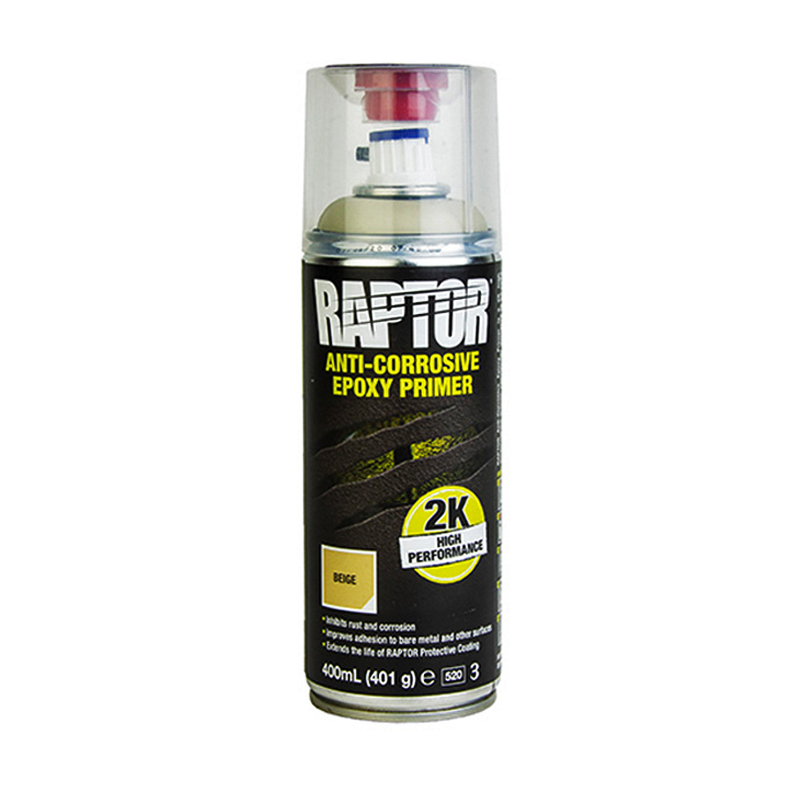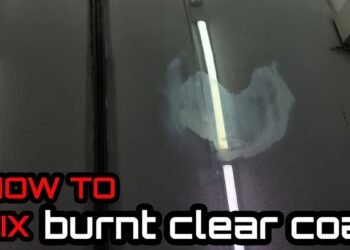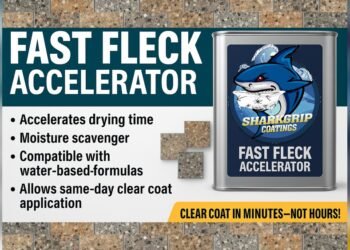When you’re working with bare metal, choosing the right primer can make or break your project. You want a primer that not only sticks well but also shields the metal from rust and prepares a solid base for your paint.
But with options like epoxy and self-etching primers, how do you know which one fits your needs? This 2K primer on bare metal guide breaks down exactly what you need to know. By the time you finish reading, you’ll feel confident picking the perfect primer to protect and enhance your metal surfaces every time.
Keep reading, and let’s get your project off to a flawless start.
Types Of Primers
Primers play a vital role in protecting bare metal surfaces and preparing them for paint. Choosing the right type of primer ensures better adhesion, corrosion resistance, and durability. Two common types of primers for bare metal are epoxy primer and self-etching primer. Each has unique properties suited for different metal types and project needs.
Epoxy Primer
Epoxy primer is ideal for mild steel and surfaces treated with media blasting. It forms a non-porous barrier that seals the metal from moisture and prevents rust. This primer also creates a strong base for additional primers or body fillers. It bonds well to the metal, enhancing paint adhesion and durability.
Epoxy primer does not offer UV protection, so it should be covered with a topcoat soon after application. Applying it quickly after sanding or blasting reduces the risk of rust formation. Its excellent corrosion resistance makes it a preferred choice for automotive restorations and metal repairs.
Self-etching Primer
Self-etching primer works well on larger metal surfaces and non-ferrous metals like aluminum and galvanized steel. It contains mild acids that chemically etch the metal surface. This process creates a strong mechanical bond between the metal and the primer.
Compared to epoxy primer, self-etching primer is more porous. Moisture can sometimes pass through it, so it is less effective against corrosion over time. Still, it dries quickly and helps paint stick better on difficult surfaces. This primer is a practical choice when speed and metal type matter most.

Credit: www.youtube.com
Benefits Of Epoxy Primer
Epoxy primer offers many benefits for protecting bare metal surfaces. It forms a solid base that improves the durability of paint jobs. Its unique properties help prevent damage from rust and moisture. Using epoxy primer ensures a longer-lasting finish and better overall performance. Here are some key advantages of using epoxy primer on bare metal.
Corrosion Protection
Epoxy primer creates a tough barrier on metal surfaces. This barrier blocks moisture and air from reaching the metal. By sealing the surface, it prevents rust from forming. This protection is vital for mild steel prone to corrosion. Epoxy primer extends the life of metal parts significantly.
Adhesion Strength
Epoxy primer sticks strongly to bare metal. It forms a tight bond that holds paint layers firmly. This adhesion prevents peeling or chipping of paint over time. It also supports the application of fillers and topcoats. Strong adhesion ensures a smooth, durable paint finish.
Surface Sealing
The primer seals tiny pores and imperfections on the metal. This sealing stops contaminants from entering the surface. It creates a smooth base for painting and further coatings. Surface sealing also reduces the risk of rust starting beneath the paint. The result is a clean, even finish that lasts.
Advantages Of Self-etching Primer
Self-etching primer offers unique benefits for treating bare metal surfaces. It simplifies surface preparation and improves paint adhesion. This primer combines etching and priming in one step, saving time and effort. Its properties make it ideal for various metal types and fast projects.
Chemical Bonding
Self-etching primer uses acids to lightly bite into the metal. This process creates a rough surface on a microscopic level. Paint sticks better because it bonds chemically with the metal. The strong bond reduces peeling and flaking over time.
Suitable Metals
This primer works well on aluminum, galvanized steel, and other non-ferrous metals. It is also good for mild steel, especially on large surfaces. Its versatility makes it popular for many automotive and industrial uses.
Quick Drying
Self-etching primer dries faster than many other primers. This feature speeds up the painting process. Quick drying helps prevent dust and dirt from sticking to the surface. It allows for faster application of topcoats and saves time on jobs.

Credit: www.reddit.com
Choosing The Right Primer
Choosing the right primer is vital for a strong, lasting finish on bare metal. The primer forms the base that protects metal from rust and ensures paint sticks well. Different metals need specific primers to offer the best protection and adhesion. Understanding which primer suits your metal type helps avoid peeling, corrosion, and paint failure.
Primer For Mild Steel
Mild steel needs a primer that blocks moisture and prevents rust. Epoxy primers work best for mild steel. They create a tough, non-porous layer that seals the metal. This primer sticks well and supports further layers like paint and fillers. Apply epoxy primer soon after sanding or blasting to stop rust from forming.
Primer For Aluminum And Galvanized Steel
Aluminum and galvanized steel require a different approach. Self-etching primers suit these metals. They contain acids that lightly eat into the surface, helping the primer bond tightly. This type dries quickly and covers large areas well. Though less moisture-resistant than epoxy, it still offers good protection for these metals.
Factors Influencing Choice
Metal type is the main factor in primer choice. Surface condition also matters; clean metal holds primer better. Environment affects durability—humid areas need stronger corrosion resistance. Consider how soon you will paint after priming. Some primers need quick topcoat application. Finally, check primer compatibility with your paint and fillers for best results.
Preparation Steps Before Priming
Preparing bare metal before applying 2K primer is a crucial step. Proper preparation ensures strong adhesion and long-lasting protection. Skipping these steps can lead to peeling, rust, and poor finish quality. Focus on cleaning, sanding, and rust prevention for the best results.
Cleaning The Metal Surface
Start by removing all dirt, grease, and oils from the metal. Use a wax and grease remover for thorough cleaning. Wipe the surface with a clean cloth to avoid residue. Clean metal allows the primer to bond tightly and evenly.
Sanding And Media Blasting
Sanding the metal surface creates a rough texture for better primer grip. Use fine-grit sandpaper for light abrasion. Media blasting is a great option for heavy rust or paint removal. It cleans deep into the metal pores and creates a strong base.
Preventing Rust
Rust can form quickly on bare metal if left unprotected. Apply primer immediately after cleaning and sanding. Use epoxy primers for a non-porous barrier against moisture. Keep the metal dry and avoid exposure to humidity before priming.

Credit: raptorcoatings.com
Application Tips
Applying 2K primer on bare metal needs care and precision. Proper application ensures strong adhesion and long-lasting protection. Follow simple tips to get the best results. These tips cover the order of layers, timing, and UV exposure handling. Understanding these will improve your painting process and final finish.
Order Of Primer And Filler
Always apply the 2K primer before the filler. The primer seals the bare metal and prevents rust. It creates a smooth base for the filler to stick to. Applying filler first can trap moisture, causing corrosion later. The right order protects the metal and improves the paint’s durability.
Timing Between Layers
Wait for the primer to dry completely before adding filler or topcoat. Drying time varies with temperature and humidity but usually takes 20 to 30 minutes. Avoid rushing the process to prevent peeling or bubbling. Light sanding between layers helps the next coat stick better. Patience ensures a smooth and lasting finish.
Handling Uv Exposure
2K primers have limited UV resistance. Avoid exposing the primer to sunlight for long periods. UV rays can break down the primer and cause fading or cracking. Apply the topcoat soon after the primer cures. If exposure is unavoidable, use a UV-resistant clear coat for extra protection. Protecting the primer from UV damage extends the life of your paint job.
Common Mistakes To Avoid
Applying 2K primer on bare metal requires care and attention. Avoiding common mistakes helps achieve a smooth and durable finish. These errors can lead to poor adhesion, rust, or uneven surfaces.
Focus on preparation and timing to ensure the best results. Understanding these pitfalls saves time and effort in the long run.
Skipping Surface Cleaning
Surface cleaning is critical before applying primer. Dirt, oil, and grease prevent proper adhesion. Even small contaminants cause bubbles or peeling later. Use a wax and grease remover for best results. Never skip this step to avoid rust and poor primer bonding.
Incorrect Primer Selection
Choosing the wrong primer harms the metal protection. Epoxy primer works best for mild steel and prevents rust well. Self-etching primer suits aluminum and galvanized steel better. Using the wrong type can cause weak adhesion or corrosion. Match the primer type to the metal for lasting protection.
Delayed Application
Apply primer soon after surface prep to prevent rust. Bare metal quickly oxidizes when exposed to air. Waiting too long leads to flash rust, ruining primer adhesion. Follow product instructions for ideal timing. Quick application keeps the surface clean and ready for primer.
Primer Maintenance And Durability
Maintaining the 2K primer on bare metal is vital for long-lasting protection. Proper care extends the primer’s life and keeps metal safe from corrosion. Understanding how to protect, inspect, and reapply primer ensures durable results.
Protecting Primer Layers
Keep primer layers safe from scratches and impacts. Avoid harsh chemicals that can damage the primer. Use gentle cleaning methods to preserve the protective coat. Store the metal in dry, shaded areas to reduce exposure to moisture and sunlight.
Signs Of Primer Failure
Look for bubbling, cracking, or peeling on the primer surface. Rust spots appearing through the primer indicate failure. Fading or discoloration may signal loss of protection. Early detection helps prevent further damage to the metal underneath.
Reapplication Guidelines
Reapply primer if damage or wear is visible. Clean the surface thoroughly before adding a new primer layer. Lightly sand the existing primer to improve adhesion. Follow product instructions for drying times and number of coats. Proper reapplication restores protection and extends durability.
Frequently Asked Questions
What Primer Is Best For Bare Metal?
Epoxy primer works best for bare mild steel, offering strong adhesion and rust protection. Self-etching primer suits aluminum or galvanized metal, providing a quick bond. Always clean metal before priming to prevent rust and ensure durability.
Will 2k Paint Stick To Metal?
Yes, 2K paint sticks well to metal when the surface is properly cleaned and primed with epoxy or self-etching primer.
Can Urethane Primer Go Over Bare Metal?
Urethane primer can go over bare metal only if the surface is properly cleaned and treated first. Use an epoxy or self-etching primer as a base for better adhesion and rust protection before applying urethane primer.
Does Epoxy Primer Work On Bare Metal?
Yes, epoxy primer works well on bare metal. It creates a strong, non-porous barrier that prevents rust and ensures excellent adhesion for paint layers.
What Is The Best Primer For Bare Metal Surfaces?
Epoxy primer works best on mild steel, offering strong adhesion and rust protection.
Conclusion
Understanding the basics of bare metal priming helps protect your project well. Epoxy primers work best for mild steel, sealing and preventing rust. Self-etching primers suit aluminum and galvanized surfaces with strong adhesion. Clean metal thoroughly before applying any primer to avoid rust.
Choose the primer based on your metal type and project needs. Applying the right primer ensures better paint adhesion and long-lasting results. Keep these simple steps in mind for a smooth, durable finish. Your bare metal will stay protected and ready for the next layer.

















